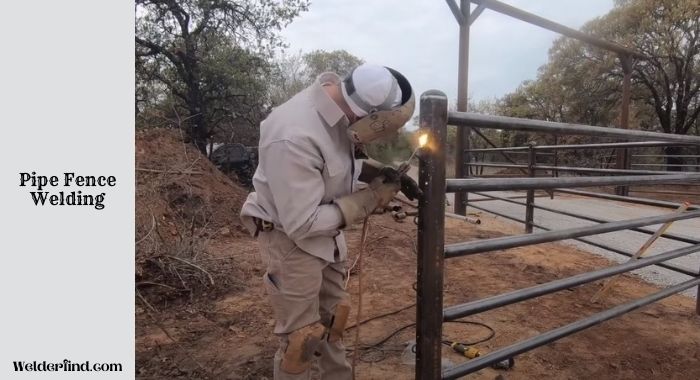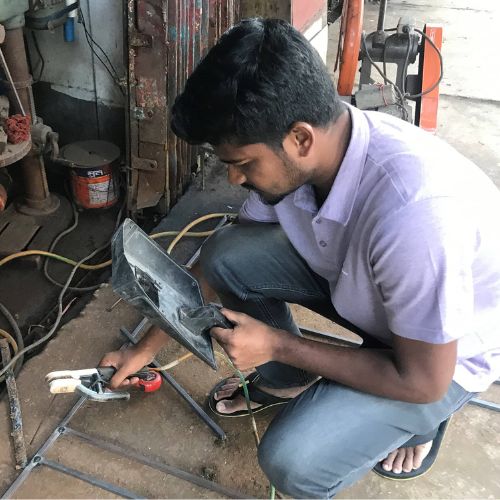Are you planning to build a pipe fence? Building a pipe fence is not a cup of tea. It requires effort, money and time. Therefore, whenever people install pipe fences, they want it to be long-lasting and cost-effective.
But how to build a pipe fence? People can build pipe fences by following some steps, such as drafting the plan, getting the necessary materials and tools, cutting and assembling the rails, and installing the tubes vertically in the ground.
However, there are many things to consider before installing the fence. Go through the entire article to learn more about the installation of pipe fencing.
Let’s start.
How to Choose the Right Pipe for Your Fence?
There are many things to take into account before installing a pipe fence. Among them, determining the purpose of the fence, local regulations for fence construction, height, perimeter, and preferred design of the fence are the most crucial ones.
Determining The Purpose Of The Fence
There are a wide variety of pipe fences. Each type has its unique features and is used for a particular purpose. Here are the major types of pipe fences:
Oilfield pipe fence
Oilfield pipe fencing will be the cost-effective choice if you plan to install pipe fences for your oilfield. These pipes use premium-quality steel which are highly rigid and can withstand the effect of extreme weather. Most importantly, these pipes are not as expensive as brand-new pipes.
Steel pipe fence
Steel pipe fencing is widely used for residential and commercial purposes. This type of fence is not only aesthetically appealing but also affordable and long-lasting. Moreover, they require less maintenance and are easy to clean.
If you want your fence to offer a modern appeal without compromising security, steel pipe fencing is a great option to consider.
HTP line fence
If you are looking for a pipe fence for livestock purposes, there is hardly anything that can beat the HTP line fence. It will offer a wooden appearance, but it doesn’t require high maintenance like wood.
Moreover, they are extremely resilient to rust, damage and splintering. The smooth surface of the fence prevents animals from climbing it. Therefore, your animals will be protected while reducing labour and repair costs.
Local regulations for pipe fence construction
Fence Permit Requirements are not universally applicable. Some places require Fence Permits, while other places ignore such issues. That’s why it is crucial to know the local regulations for fence construction to avoid future disputes.
However, some vital issues for fence construction may involve materials, height, etc. For instance, the installation of a 6-foot-tall fence may not necessitate permits, but permits are needed for fences taller than that. In addition, building concrete-based fences will more likely to require a permit than wooden or PVC-made fences.
Therefore, local regulations will often shape your decision regarding the material, and height of the fence.
Material selection
One will see a wide range of variations when it comes to pipe fence materials. Steel, Aluminum, PVC, and Vinyl are some of the common materials for pipe fences. Here are the pros and cons of each material:
| Material | Pros | Cons |
| Aluminum | cost-effective durable lightweight rust-resistant | comparatively expensive |
| Steel | Extremely sturdy Resistant to decay Environment-friendly Low maintenance | Expensive Develop Rust unless it has a rust-resistant coating |
| PVC | More affordable Maintenance-free Customizable Rust and Water Resistance | Lack of strength Time-consuming to install |
| Vinyl | Easy installation Durable maintenance-free | costlier |
Determining the pipe’s diameter and thickness
If you fail to determine the appropriate size of the fence, it will ultimately fail to serve your purpose. But how to determine the right diameter and thickness for a pipe fence? One can follow the below-mentioned general guidelines for pipe fences based on different purposes:
| Purposes of pipe fence | Ideal diameter range | Ideal thickness range |
| Residential purposes | between 1.5 and 2 inches | between 0.120 and 0.133 inches |
| Commercial purposes | between 2 and 2.5 inches | between 0.140 and 0.154 inches. |
| Security purposes | between 2.5 and 3 inches | between 0.154 and 0.188 inches |
How To Build A Pipe Fence Step By Step Guide
Here is the step-by-step guideline for building a pipe fence:
Drafting the plan
Measuring and marking
After deciding on the material and design of the pipe fence, it is time to measure the perimeter of the fence. Don’t forget to mark the boundaries with stakes and string
Determining length
calculate each horizontal rail’s length based on your measurements and the preferred height of the fence.
Calculating connectors
Usually, two connectors are needed for each joint. Now, calculate the total number of connectors for the entire fence construction.
Checking ground conditions
Make sure the ground is suitable for mounting vertical posts. Otherwise, you may need to make holes and add concrete footing.
Having the parts and tools
You will need a number of materials and tools while building the pipe fence, such as pipes, post caps, connectors, pipe cutter, tape, shovel, etc. Make a list of necessary items and purchase them from a reliable source.
Cutting and assembling:
Cut the pipes
Precisely cut the pipes based on your desired length.
Assemble the horizontal rails
Initially, join the horizontal rails with the connectors. Make sure, the rails are stable and uniform.
Attach vertical pipes
Now, attach the vertical pipes to the connectors at the proper distances.
Installing the tubes vertically in the ground
Preparing holes
If you install posts, try to dig holes deeply since deeper holes provide more stability. However, the depth will depend on the area and local building codes. You can also add concrete around the posts to place them firmly.
Attach fence rails
Now join the horizontal rails to the vertical posts by using connectors. Try to add post caps on the vertical posts to have a finished look.
Checking the stability
After installing rails and posts, check the stability and you are done!
Welding

Welding is the process of joining two materials through high heat. Welding is also used in fence construction for various purposes. Some uses of welding in fence construction are as follows
Joining fence panels and posts
The Welding process helps to firmly join the pipes and posts compared to other methods due to the application of high heat. As a result, the fence can’t lean over. Therefore, welding is more common in taller fences since they are more vulnerable to strong wind.
Repairing the damaged fence
older pipe fences can get damaged due to various reasons. The welding process is often used to fix the damages. It is one of the most cost-effective methods to reuse your older fences instead of entirely replacing them.
Customized fences:
Welding is often used in building customized pipe fence since customized fence involves various materials, designs and sizes.
Safety precautions for welding
Even though welding is a highly effective method to ensure a firm and stable fence, it is a risky process. Therefore, it is better to hire a professional welder to do this task. If you want to do it on your own, maintain the following safety precautions:
- Put on Personal Protective Equipment, such as gloves, Safety Googles, flame-resistant jacket, sturdy boots
- Always choose a well-ventilated area for welding to avoid inhalation of toxic fumes
- Remove Flammable Objects from the welding area to avoid unnecessary ignition. These materials include fabric, papers, chemical objects, etc.
- Always have a Fire Extinguisher in the welding area. It will help you to prevent a small fire from turning into an uncontrollable one.
Final Verdict
Pipe fences are getting immensely popular due to their versatility, strength and durability. Therefore, many people ask how to build a pipe fence. People can build pipe fences by following 4 easy steps: drafting a plan, getting the necessary materials and tools, cutting and assembling the rails and installing the tubes vertically in the ground.
Since the installation of a fence involves precise measurement, people are advised to seek professional help in case of any difficulties.
